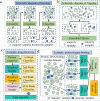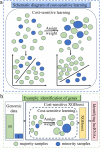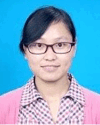A review of machine learning methods for imbalanced data challenges in chemistry
- PMID: 40271022
- PMCID: PMC12013631
- DOI: 10.1039/d5sc00270b
A review of machine learning methods for imbalanced data challenges in chemistry
Abstract
Imbalanced data, where certain classes are significantly underrepresented in a dataset, is a widespread machine learning (ML) challenge across various fields of chemistry, yet it remains inadequately addressed. This data imbalance can lead to biased ML or deep learning (DL) models, which fail to accurately predict the underrepresented classes, thus limiting the robustness and applicability of these models. With the rapid advancement of ML and DL algorithms, several promising solutions to this issue have emerged, prompting the need for a comprehensive review of current methodologies. In this review, we examine the prominent ML approaches used to tackle the imbalanced data challenge in different areas of chemistry, including resampling techniques, data augmentation techniques, algorithmic approaches, and feature engineering strategies. Each of these methods is evaluated in the context of its application across various aspects of chemistry, such as drug discovery, materials science, cheminformatics, and catalysis. We also explore future directions for overcoming the imbalanced data challenge and emphasize data augmentation via physical models, large language models (LLMs), and advanced mathematics. The benefit of balanced data in new material design and production and the persistent challenges are discussed. Overall, this review aims to elucidate the prevalent ML techniques applied to mitigate the impacts of imbalanced data within the field of chemistry and offer insights into future directions for research and application.
This journal is © The Royal Society of Chemistry.
Conflict of interest statement
There are no conflicts to declare.
Figures
















References
-
- Jiang J. Ke L. Chen L. Dou B. Zhu Y. Liu J. et al., Transformer technology in molecular science. Wiley Interdiscip. Rev.: Comput. Mol. Sci. 2024;14(4):e1725.
-
- Pisner D. A. and Schnyer D. M., Support vector machine, in Machine learning, Elsevier, 2020, pp. 101–121
Publication types
Grants and funding
LinkOut - more resources
Full Text Sources

